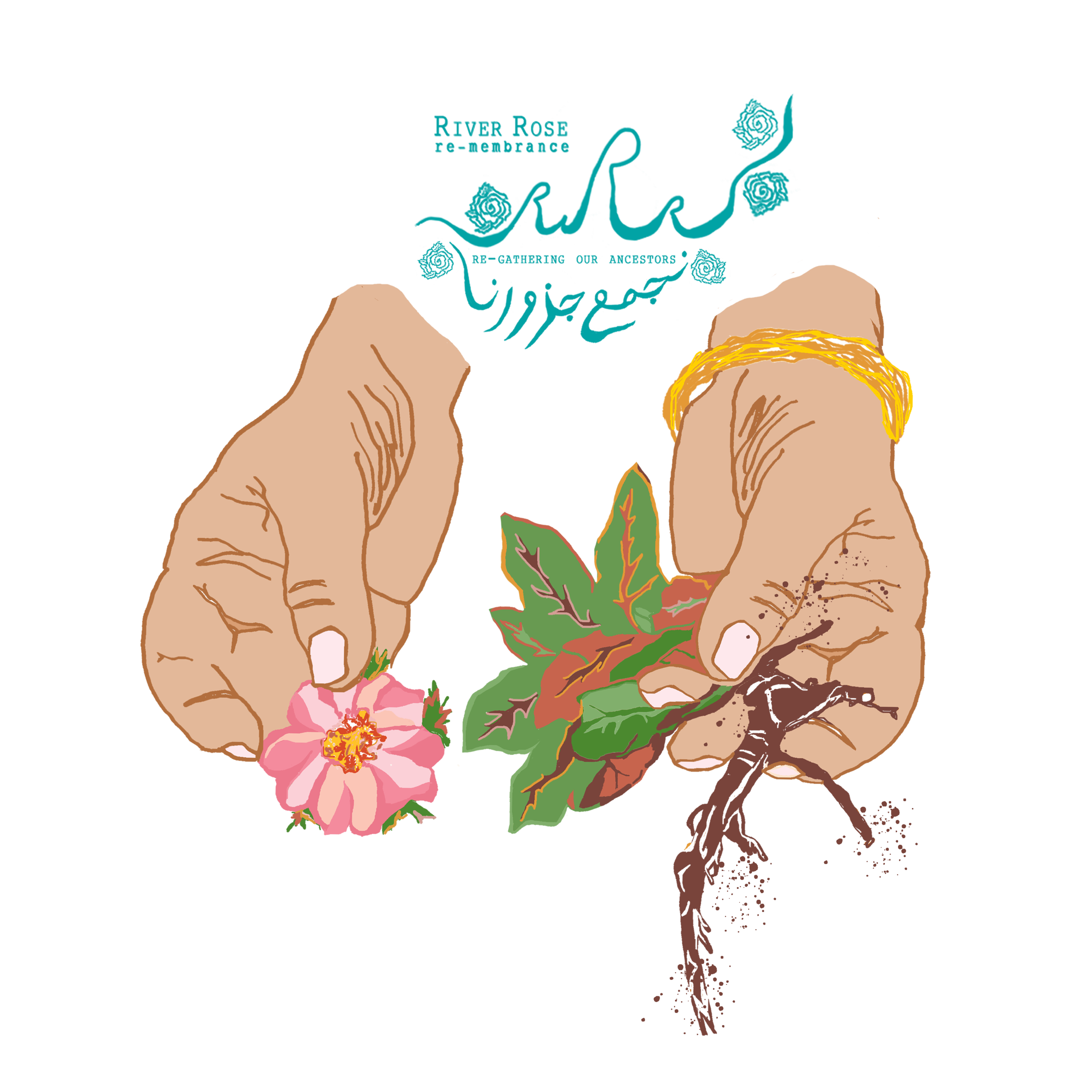Reclaiming Residue: natural dyeing for re-membrance
by Nicole Barakat
To listen is to know.
To know where I am.
To know who I am.
In my art practice, I have been working with plant dyes as a way of listening. I engage a variety of forms of dyeing as ways of listening to the places where I am, to the earth, the water, the trees.
I have been working with plants to dye cloth for more than twenty-years. I mostly use plants I find where I live and like to collect plants from windfalls and the ground. I also use plant material and scraps from the kitchen, including red & brown onion skins, red cabbage, turmeric root, purple kale and tea leaves.
In this animation I made, I am using karkade (hibiscus tea). When I recently shared some karkade with my friend Maissa, who grew up in Tripoli in Lebanon, she told me a story of her Aunt Bouchra who was obsessed with it and would drink it for any ailment. While her Aunt Ghalia would have many bottles of it in the refrigerator and make the children drink it on hot summer nights.
As a child, Maissa and her siblings would then make jokes as the word karkade is very close to the word karkabe, which means chaos in Arabic. These stories my friends share hold such weight for me. My family is also from North Lebanon, from a small village called Kfarsghab. My father migrated here in 1960. My mother arrived in 1969, she was born and raised on the lands of the Narragansett (Rhode Island, USA) and was second generation Lebanese-American. We have stories too, but they have been diluted with assimilation, time and distance. I was born and raised in the Diaspora (on the land of the Gadigal People, “Sydney, Australia”). This means that I am constantly gathering the residue, the pieces that cross my path and piecing them together with my needle and thread.
I myself only recently started drinking karkade as a tea. I love the super tart and tangy taste of it and with its high iron and vitamin C content, I am certain it has kept me from getting a cold this winter. When I saw the way karkade stained my kitchen bench, I started to save the left overs in a jar with the intention to dye with them. This was the first time I used karkade as a dye and I am excited at the brilliance of the colour!
I have mostly worked with plants that are indigenous to the lands I live and work on, the lands of the Gadigal, the Darug and Wiradjuri people. As I reconnect and remember with my own SWANA ancestral plants, I am finding new ways of listening and remembering, re-gathering and reclaiming the residue to know where I am and to know who I am.
A few notes on dyeing;
This type of dyeing is solar dyeing. Solar dyeing uses the sun to steam and heat the plant material and the cloth to transfer the colour and print the cloth with the marks of the plant.
It is important to bind your cloth and plant bundle as tight as possible. The more contact that the cloth has with the plants, the better result. Time is also vital here and the longer you can leave your bundle of plants and cloth in the sunshine, the better. I would recommend a minimum of one to two weeks, but longer if you can be patient.
If you would like to use cotton cloth, I would recommend placing a piece of rusted metal inside the bundle with the plants and pre-soaking the piece in salty water. Ensure that the cloth stays wet over the duration of the dyeing period.
You can allow your bundle to cool and dry completely before unwrapping it. You can then rinse and gently wash your cloth.
--------
Nicole Barakat is a queer femme, SWANA artist who works to unpick the borders of art and life with deep listening and intuitive processes.. Her practice is grounded in the necessity of imagination and art in transforming the conditions of everyday life.
With ancestral roots in Kfarsghab, Lebanon and born and living on Gadigal land, Nicole continues to dismantle and decolonise her education by actively listening, respecting and centering First Nations people’s history, stories and perspectives.
Website: http://www.nicolebarakat.com.au
